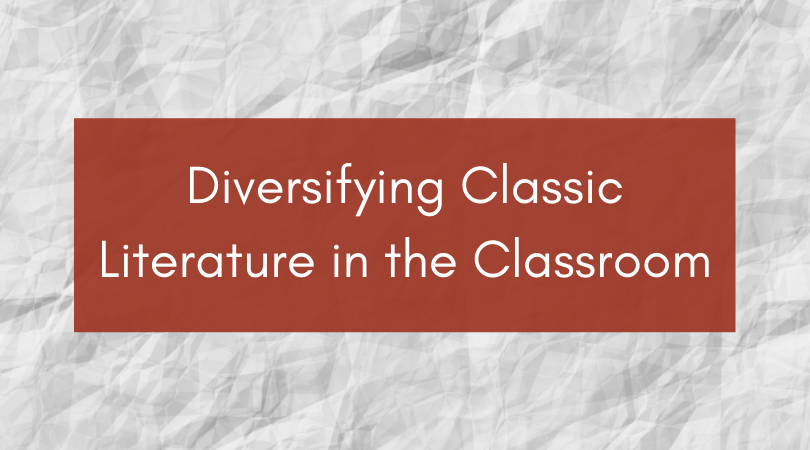In this blog post by Kiana Low, our Lee & Low summer intern, she shares the need for educators to create space for more diverse, contemporary books and voices to balance the “classics.”
The classics. If you attended high school in the United States, your mind may immediately go to Shakespeare, Jane Eyre, or maybe even Nathaniel Hawthorne, whose The Scarlet Letter has been a Puritan warning against female sexuality for nearly two centuries. These are the old guard of high school English classics—literature included in reading lists for generations. There are also “modern classics”—you may think of J.D. Salinger, Harper Lee, and John Steinbeck.
But now, 70+ years after these modern classics were published, educators and administrators wonder how to incorporate more diverse and contemporary books into their curriculum, while still balancing the classics. Recently on our blog, Paul Bambrick-Santoyo and Stephen Chiger, co-authors of Love and Literacy: A Practical Guide for Grades 5-12 to Finding the Magic in Literature, explained that high school educators can and should approach text selection and build inclusive curricula. The “classics” are thought of as an impenetrable block of literature that cannot be added to or revised—but a new, diverse, contemporary book that schools decide to teach could be the next classic.
Many educators and administrators may be thinking, where to start? As someone who by no means is an educator nor administrator, I cannot give actual advice, but I can share what I’ve learned as a student.
My high school English teachers showed incredible care for balancing the new with the old. Sophomore year, we read classics such as The Merchant of Venice and A Picture of Dorian Gray, as well as The Glass Castle and What is the What?, a memoir about a boy living through the Sudanese Civil War. Junior year, we read Wuthering Heights and The Women of Brewster Place by Gloria Naylor, compiling the stories of several Black women through their complex and different lives during the 1960s. In my senior year, my teacher taught Antigone, Chronicle of a Death Foretold by Gabriel García Márquez, as well as Jane Eyre side-by-side with Wide Sargasso Sea, written from the perspective of Bertha Rochester and challenging Mr. Rochester’s character. You can pair I Am Alfonso Jones with To Kill a Mockingbird to provide two perspectives on racial inequality in this country.
The collections of books we read were varying and complex; and they balanced classic and modern perspectives. The Women of Brewster Place and Chronicle of a Death Foretold were not based in the 21st century, but they brought to the table racial, cultural, and gender perspectives not widely-taught in traditional English settings. Thinking back on my classroom experience, a common thread was how they made every book accessible, regardless of era. The new classics brought out modern themes and perspectives and challenged the old-fashioned ones.
Incorporating modern and diverse books does not mean you must limit your search to books published in the last 15 years. American literature has its own set of classic authors—Maya Angelou, Toni Morrison, Chang Rae-Lee, Amy Tan, Kazuo Ishiguro, and far more. There are hundreds of BIPOC authors from the past century whose books can and should be included in curricula. Many of their perspectives and stories remain true in today’s world, and there are some books written over a century ago that have more relevancy now than when originally published.
The concept of “classics” can seem more limiting than it actually is. We shouldn’t bind ourselves to the idea of “‘classics” —a concept in itself that is male and Western-centric —simply for the sake of not knowing what comes next. The classics have expanded and redacted over time, and educators have been the ones to lead the way. The lesson of the story is simply this: if you want the space, make it. Ultimately, books convey the human experience — something that does not change as radically over time as we think it does. There are hidden classics everywhere, and we are fortunate to be in no short supply of contemporary and increasingly diverse books to add to our collections.
 Kiana Low was Lee & Low’s summer literacy intern. Kiana is a recent graduate from the High School of American Studies at Lehman College, and a future student at Wesleyan University.
Kiana Low was Lee & Low’s summer literacy intern. Kiana is a recent graduate from the High School of American Studies at Lehman College, and a future student at Wesleyan University.









